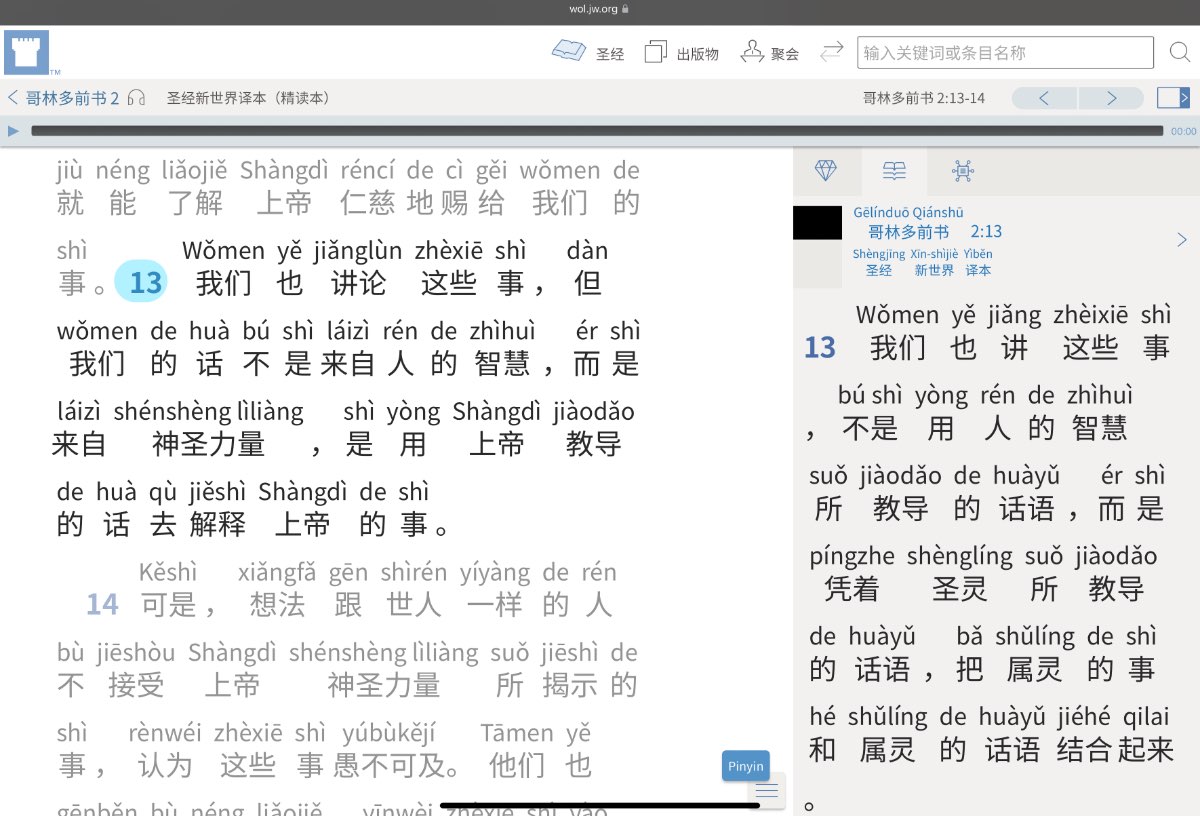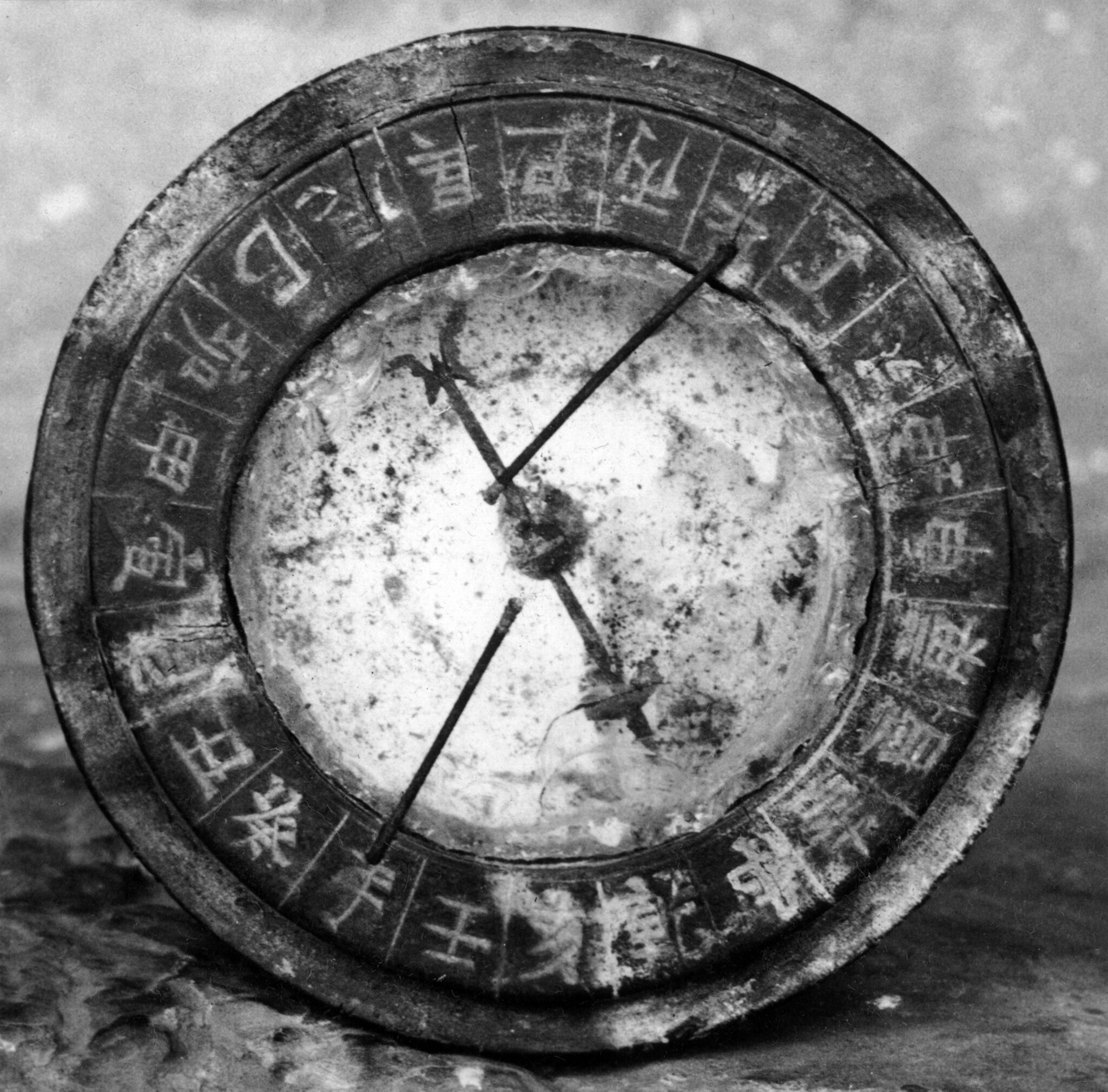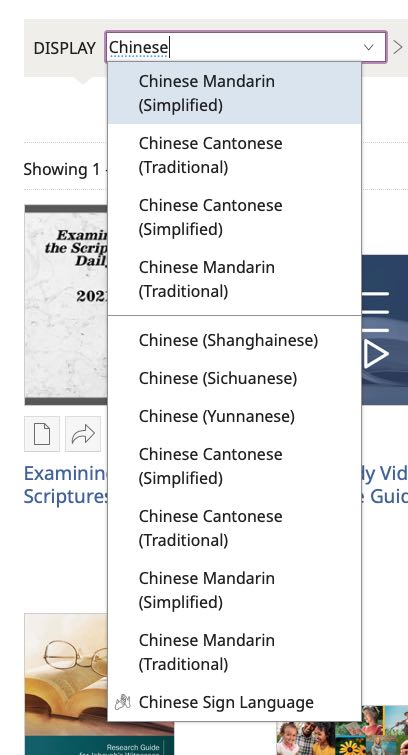Shàngdì (Shàng·dì Above’s · {Emperor → [God]} → [God] 上帝) ← Tap/click to show/hide the “flashcard”
Appendix A2 of the English New World Translation of the Holy Scriptures (Study Edition), entitled “Features of This Revision”, discusses vocabulary changes that have been made in the current revision, words that have been translated differently than before. As noted in various entries in the excellent resource Referenced Theo. Expressions (RTE), Appendix A2 of the current Mandarin version of the New World Translation Bible (nwtsty) correspondingly discusses words that have been translated differently in the current revision of the Mandarin NWT Bible, compared to how they had been translated before.
Since we base what we say in Jehovah’s service on his Word the Bible, the vocabulary used in it—and the way those vocabulary words are translated—should be reflected in how we speak in our ministry, at our meetings, etc. So, it is beneficial for us Mandarin field language learners to be familiar with the latest thinking from the organization on how Bible terms should be translated into Mandarin.
The Source of Spirituality
For a long time, we in the Mandarin field had been using the Mandarin word “shǔlíng (shǔ·líng {(in the) category (of)} · spirit → [spiritual (nwtsty-CHS Appx. A2 notes change from “shǔlíng” to “xīnlíng”, etc.)] 属灵 屬靈)” to correspond with the English word “spiritual”. However, Appendix A2 of the current Mandarin version of the New World Translation Bible (nwtsty) points out that many beginning readers of the Mandarin NWT Bible find the word “shǔlíng (shǔ·líng {(in the) category (of)} · spirit → [spiritual (nwtsty-CHS Appx. A2 notes change from “shǔlíng” to “xīnlíng”, etc.)] 属灵 屬靈)” to be hard to understand. So, the current revision of the Mandarin NWT Bible (nwtsty) instead uses expressions with clearer meanings, with the context determining which expression is used.
One example that the appendix provides is that 1 Corinthians 2:13 now uses expressions based on “Shàngdì (Shàng·dì Above’s · {Emperor → [God]} → [God] 上帝)”, this week’s MEotW, instead of expressions based on “shǔlíng (shǔ·líng {(in the) category (of)} · spirit → [spiritual (nwtsty-CHS Appx. A2 notes change from “shǔlíng” to “xīnlíng”, etc.)] 属灵 屬靈)”:

| Old Translations | New Translations |
|---|---|
| shǔlíng (shǔ·líng {(in the) category (of)} · spirit → [spiritual (nwtsty-CHS Appx. A2 notes change from “shǔlíng” to “xīnlíng”, etc.)] 属灵 屬靈) de (’s 的) shì (matters 事) | Shàngdì (Shàng·dì Above’s · {Emperor → [God]} → [God] 上帝) de (’s 的) shì (matters 事) |
| shǔlíng (shǔ·líng {(in the) category (of)} · spirit → [spiritual (nwtsty-CHS Appx. A2 notes change from “shǔlíng” to “xīnlíng”, etc.)] 属灵 屬靈) de (’s 的) huàyǔ (words 话语 話語) | Shàngdì (Shàng·dì Above’s · {Emperor → [God]} → [God] 上帝) jiàodǎo (jiào·dǎo teaches · {guides → [instructs]} 教导 教導) de (’ 的) huà (words 话 話) |
To translate the English word “spiritual” in the above scripture, the current Mandarin NWT Bible goes right to the Source of spirituality—God himself. As the context of the above scripture explains, we need “the spirit that is from God” in order to truly understand “spiritual matters”.—1 Co. 2:10–13.
True, we humans have the potential inside ourselves to cultivate spirituality and be spiritual people, but that’s only because God created us with that potential. As the Bible explains, God made us humans in his image, spiritually speaking.—Ge. 1:26, 27.
Indeed, true spirituality ultimately comes from Jehovah God, and he is the One we need to look to as our ultimate Inspiration and Source of spiritual instruction and insight, not ourselves, other humans, or any of the multitude of persons or things that people of the world look to.—Ps. 36:9.
God and the Ancient Chinese
The Lasting Peace brochure has a box explaining how the concept of Shàngdì (Shàng·dì Above’s · {Emperor → [God]} → [God] 上帝) has been viewed in China throughout its history. Interestingly, it points out that while to many Chinese people today the concept of a God who is a person is foreign and unfamiliar, “the ancient Chinese believed in the existence of a Supreme Sovereign of the universe”. Check out the link for more information.

